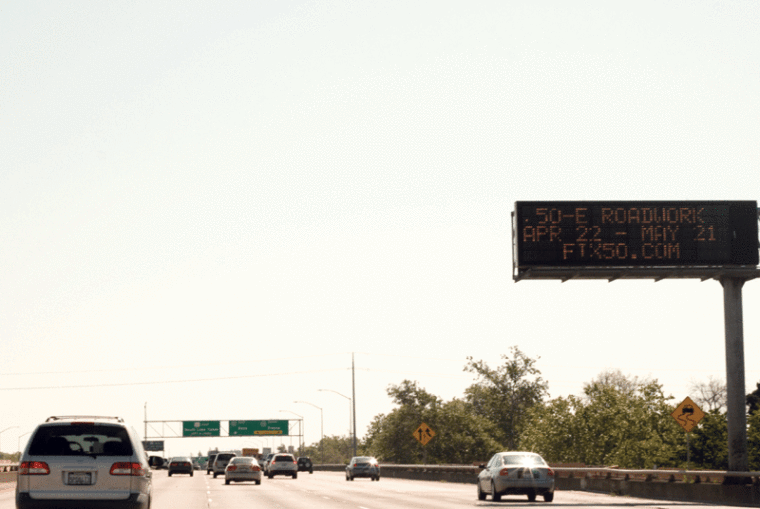Road maintenance project will delay commuters later this month
April 8, 2014
Sacramento State commuters could be delayed for more than 30 minutes a day for the rest of the spring semester, starting in less than two weeks.
Under the project name Fix50, Caltrans has scheduled four phases of traffic-interfering repairs to U.S. Highway 50 between 18th and 24th streets, starting April 22 and ending June 25.
Larry Brohman, an associate transportation planner for the California Department of Transportation, said the stretch of road being worked on has about 10,000 cars passing through in each direction during one peak hour, resulting in about a quarter of a million cars per day.
Built in 1968 and known as the W/X Viaduct, the two 2,530 foot long elevated structures have developed wear and tear over the years, including extensive cracks in the deck and annual bridge inspectors decided it was finally time to address those issues.
While there are no safety concerns, Caltrans will focus on rehabilitation by scraping out the pavement and installing 4-inch concrete road as well as adding steel column casings for added protection against earthquakes. The kind of temperatures needed for the concrete to dry is why the repairs need to be during the day.
Caltrans will also widen the shoulder of the roads while adding new concrete barriers, sign structures and lighting.
The first two phases of the project from April 22 through May 6 could have a greater effect on Sac State because they focus on the eastbound lanes.
While Brohman said there will always be at least 3 lanes open for cars to drive on, Eastbound 50 connectors to Southbound 99 and Northbound Business 80 will be closed for the two-week second phase.
Brohman said to expect major traffic delays but the length is difficult to estimate because there is no effective way to predict driver behavior and know how many commuters will receive the message to plan accordingly.
“We have heard estimates as low as 30 minutes,” Brohman said while admitting those are optimistic predictions. “We are planning for the worst and hoping for the best.”
Sacramento State University Transportation and Parking Services is heading the efforts to diminish the Sac State traffic delays that could result from this upcoming major highway construction project
Senior Director of UTAPS Tony Lucas said he encourages students to increase the use of regional transit to decrease the amount of cars coming to campus each day.
UTAPS will provide a shuttle between campus and the light rail while prepared to provide an additional van if their current methods are not effective enough to improve traffic.
Lucas hopes the fear of getting stuck in traffic will help start a new culture of public transportation and increased bike riding. He said the change to such methods would not just decrease the amount of cars on campus but benefit students financially and physically.
All students pay for the one card commuter sleeves even if they never use one and Lucas thinks more people should take advantage of that resource.
“I’m an advocate for public transit,” Lucas said. “It might be a little ironic because UTAPS sells parking passes but that’s not what it’s about. It’s about providing good transportation with whatever works.”
If students still insist on driving, Lucas encourages carpooling, and at the very least he wants everyone to plan for the delay before it happens by leaving home earlier and not taking the repairs lightly.
Lucas said Caltrans has had smooth repair jobs in the past causing them to be a victim of their own success. He said people have such a hard time believing traffic will strongly affect them, that they are in danger of underestimating how long it will take to reach campus.
Lauren Castle, a senior nursing major, said encouraging regional transit is a good idea in terms of finance and timeliness.
“Students should take more advantage because we get the service with our tuition,” Castle said. “It saves money and it will be easier when there is extra traffic.”
As an occasional user of the light rail, Castle said it saves her 15 minutes automatically because she does not have to worry about finding a parking space during rush hour.
Lucas said students unaware of how to use regional transit can take advantage of a recent Google Maps update that provides routes for public shuttles and the light rail. He said any student can make the change if they are willing to break their own patterns.
“They’ve got it (potential) but they don’t want to use it because they’re so used to flexibility of driving their car,” Lucas said. “I don’t know if this project will be enough to change people.”
Brohman said there will be lots of alternative options available for commuters and he wants as many people as possible to be informed about the impending construction using. Suggestions for students include using smartphone apps to find alternative ways of travel and developing multiple routes before the construction begins.
Even though the timing of the construction will be problematic for many, Brohman said there was no other choice.
“Its costly, inconvenient and disruptive, but it needs to be done,” Brohman said. “You can’t avoid it.”























































































































